
Can You Put a Tent in the Dryer Safely?
Can You Put a Tent in the Dryer Safely? Published February 4th, 2023 by Allen Campbell Well, it’s no secret that a tent is a
Published July 27th, 2022 by Allen Campbell

It can be pretty frustrating when your canopy won’t stay strong in the wind. You spend all that time and effort getting it set up just right, and then a gust of wind comes along and blows it away. So, how much weight is needed to hold down the canopy from blowing away?
In this blog post, I’ll discuss the actual weight needed for the canopy to avoid it from blowing away and provide information on the different methods for adding weight to your canopy. So, whether you’re just getting started with canopying or are looking for ways to improve your setup, read on!
Different types of weights can be used to secure your canopy, depending on the type of terrain you are using it on. Here are some common types of weights that you can use to keep your canopy in place.
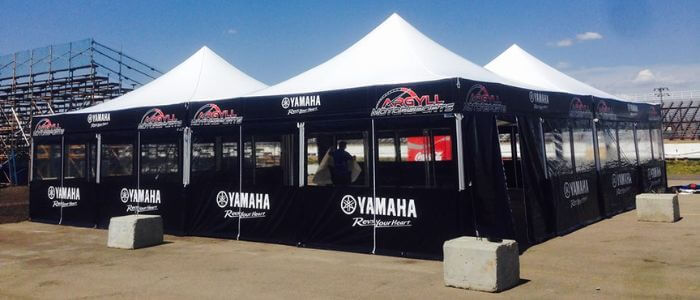
Concrete blocks provide a convenient and inexpensive way to increase the stability of your tent, and can be easily transported without any hassle. Look wise, they aren’t the best option, but if you want people to focus on what’s inside your tent rather than outside, then concrete blocks will do the job just fine.
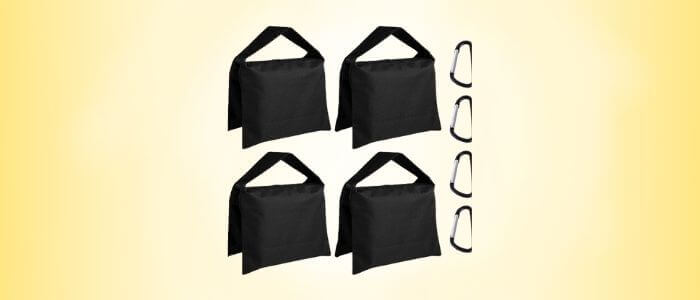
In serious weather conditions, a sandbag can add extra stability and protection to your tent. Sandbags have been used by people all over the world as a means of providing the best possible stability to their tents. There are many companies out there who provides the sandbags along with the canopy tents.
Polyester sandbags are the best choice for weather conditions where they might get wet from rain or snowfall because they are waterproof.
I like sandbags because they are light and easy to carry. You can empty them out when you’re not using them, which is an extra benefit if you’re hiking. In that way, they won’t weigh you down or slow your pace.
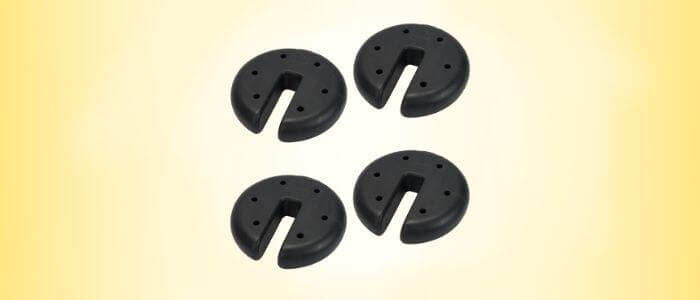
Weight plates are the best way to keep your canopy tent in place. There are weight plates specifically designed for canopy tents that can be found at most camping and outdoor stores. Some weight plates come with sand already in them, while others will require you to fill them with a weighted material yourself.
These weight plates are designed to seamlessly blend in with the overall look of your tent, creating a more aesthetically pleasing appearance.
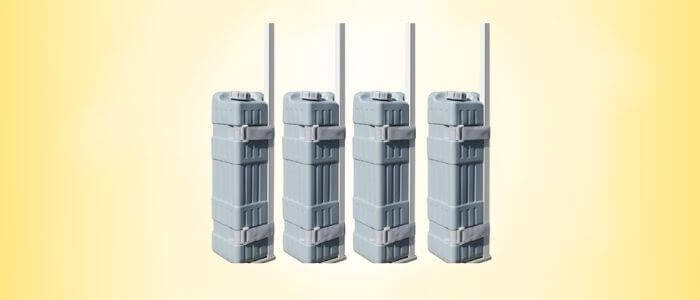
Water weights are the perfect solution for those who want to avoid the hassle of transporting concrete weights or weight plates. The water weight is not a burden, it is something to be easily managed and transported. Since it is made of durable and sturdy materials, filling the case with water can act as a weight for tents, making it ideal for canopy tents. Just carry with you an empty container and fill it with water when you’re ready to increase the stability of the canopy tent.
Whether you’re looking for a budget-friendly option or want to learn new ideas, making your own tent canopy weights is a great option. I have classified the 2 best ideas on how to make your tent weights at home.
In order to make bucket tent weights at home, you will need to invest in at least four good-quality buckets. You can easily fill it with either sand or water, depending on your preference.
It is better to test the weight of your buckets before leaving for your destination so that you can be sure they are heavy enough to keep the tent in place during windy conditions. In that way, you will also know how much sand or water is needed on-site. The bucket is a perfect way to store your sand or concrete because it is easy to carry with you when needed.
You can also make PVC weights by filling pipes with concrete. PVC weights are an easy method to make sure your canopy doesn’t blow and It should be noted that you will need 4 pipes for this method (1 for each leg).
You can prefer homemade PVC weights for your tent as they are easy to carry and don’t take up too much space. Also, they look great and will complement any style you have going on at your campsite.
Important Note: If you don’t properly secure your weights, the tent canopy can be blown away by a strong wind. Generally, people forget to secure the weights properly, leading to disastrous consequences. So, it’s important to be extra careful while strapping the weights on each leg of your canopy tent and then tying it tightly at both ends using ropes or bungee cords.
40 pounds is the general recommendation for a single leg according to the manufacturers, and Farmers & Craft Shows recommend 24 lbs for each leg. But I would suggest you follow the manufacturer’s instructions to be on the safer side. Don’t limit yourself when it comes to tent weights because it is the only device that will keep you and your family safe from serious weather conditions.

I have listed down three different types of weights: Sandbags, Concrete Blocks, Water Weights, and Weight Plates. All of these canopy weights have their own set of benefits that make them perfect for different circumstances. Additionally, there are 2 best methods of making your own weights at home that is by filling buckets with sand or water, and by filling PVC pipes with concrete.
I would suggest you use these methods as they are very easy to make. Lastly, it is important to note that you will need 40 pounds of weight on each leg of your canopy tent to keep it from blowing away. I hope this guide was helpful in giving you an idea of how much weight is needed to secure the tent canopy.

Allen is a full time writer at Mastercanopies.com and enjoys traveling around the United States and exploring nature. He enjoys writing about canopies as he believes they are extremely crucial in having a successful camping trip whether it be a trip to the beach, mountains, or the open plains.

Can You Put a Tent in the Dryer Safely? Published February 4th, 2023 by Allen Campbell Well, it’s no secret that a tent is a
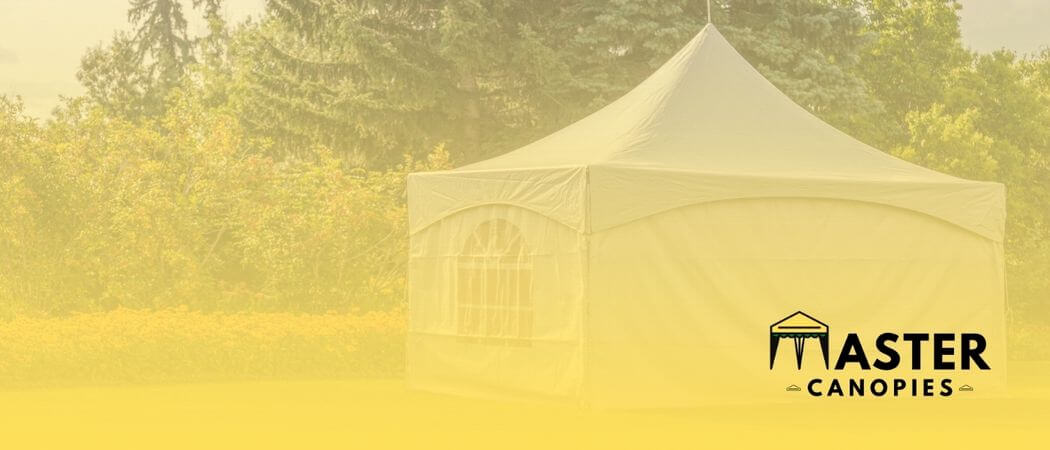
How to Print on a Canopy: How to Print Custom Images/Logos Published February 4th, 2023 by Allen Campbell Do you want to print something special
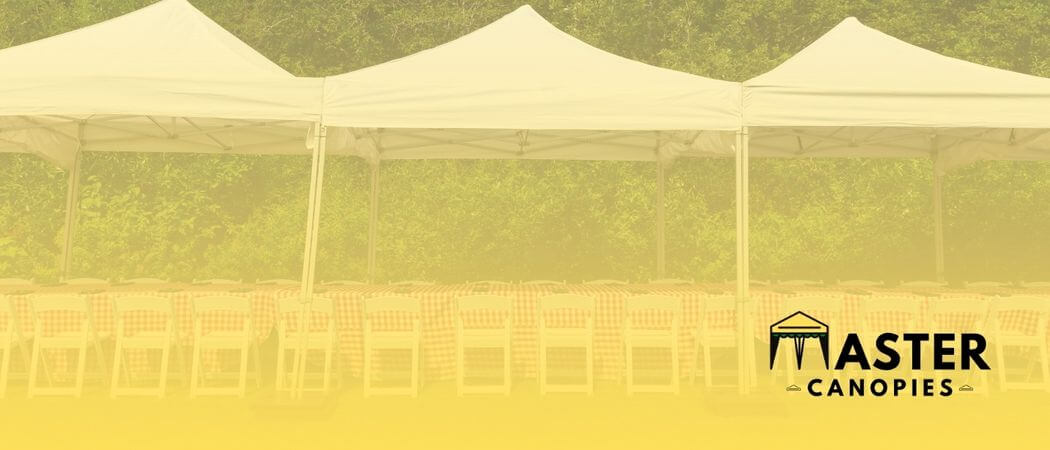
How to Choose the Best Outdoor Event Flooring for your Next Celebration Published January 31st, 2023 by Allen Campbell Planning an outdoor event can be

How to Insulate a Tent for Winter and Keep Warm Published February 3rd, 2023 by Allen Campbell Is your tent the last frontier when it
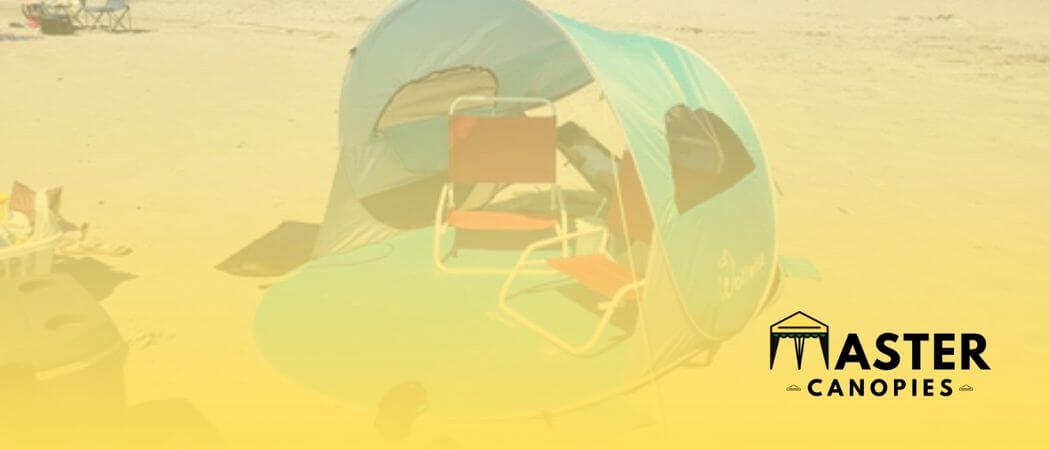
Wolfwise Beach Tent Review: Should You Buy It? Published January 23rd, 2023 by Allen Campbell Are you planning a beach vacation but don’t know exactly
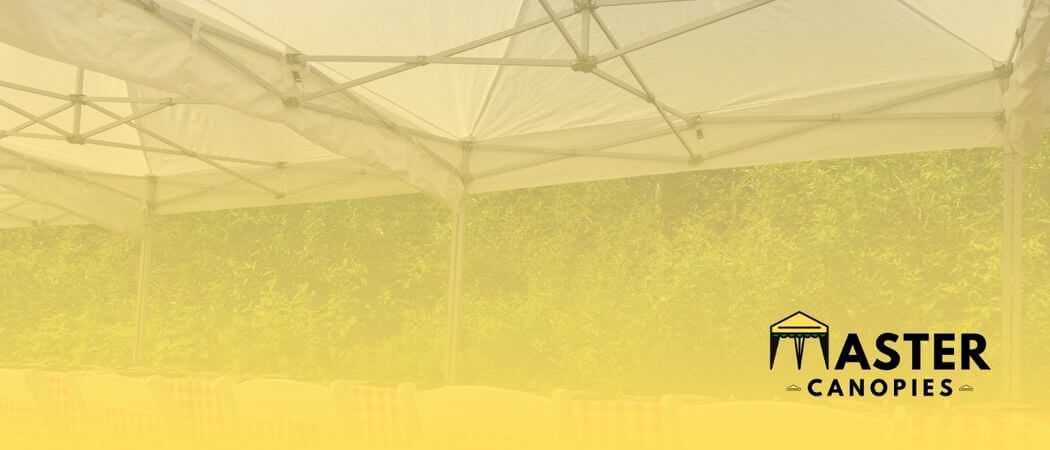
How to Start a Tent Rental Business (and have Success with It!) Published January 23rd, 2023 by Allen Campbell Do you have a knack for

Wolfwise Beach Tent Instructions: Easy Setup Guide Published January 23rd, 2023 by Allen Campbell Let’s face it, setting up a beach tent can be tricky…
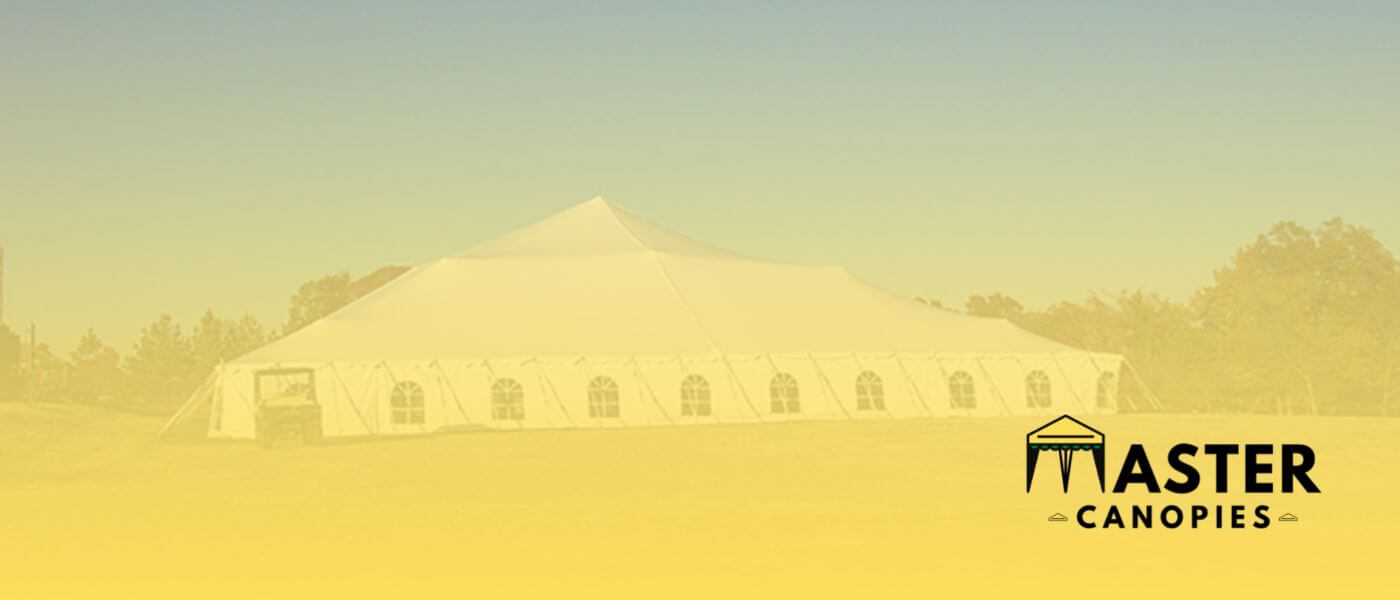
Best 100×100 Tents for Large Gatherings and Parties Published January 12th, 2023 by Allen Campbell Finding the right tent for your next event can be

Best Tent Rentals in Downers Grove, IL Published January 12th, 2023 by Allen Campbell Hoping to make a big impact in Downers Grove? Well, if

Master Canopies is here to bring you the best canopies for the outdoors so that you can enjoy the fresh air without the gleaming and burning light of the sun.

Master Canopies is here to bring you the best canopies for the outdoors so that you can enjoy the fresh air without the gleaming and burning light of the sun. As an Amazon Associate, we earn from qualifying purchases.